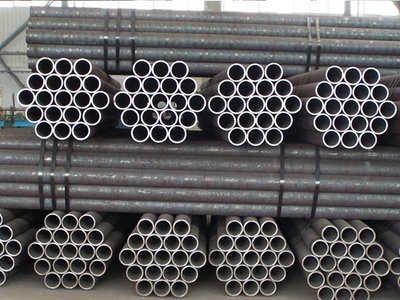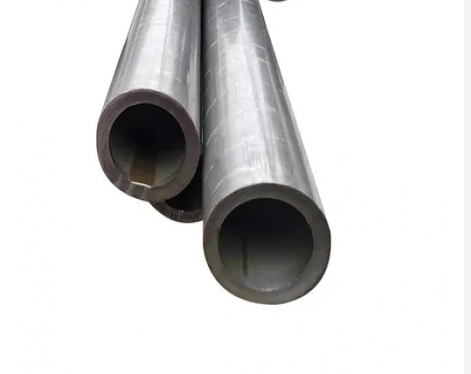1. Coating inspection and acceptance
(1) During and after surface coating construction, the painted workpiece should be protected to prevent flying dust and other sundries.
(2) The treatment and inspection after painting should achieve consistent coating color, bright and bright color, no obvious defects such as wrinkled skin, blistering, sagging and missing coating.
For the measurement of coating film thickness, use a contact type paint film thickness gauge to measure the paint film thickness. The paint film thickness gauge generally measures the thickness of 3 points and takes the average value.

2. Quality inspection
(1) Quality inspection is carried out by sampling inspection according to the design regulations.
(2) Check root by root visually. The surface of the covering layer should be uniform, flat, free of air bubbles, and free of defects in the covering layer such as wrinkles, bumps, and uneven blanking.
(3) The thickness of the paint film is measured with a magnetic thickness gauge. Measure points every 1.5 meters on the circumference of the two ends and the middle of the single-section steel pipe. The thickness of the paint film should meet two 85%. That is, the thickness of 85% of the measuring points meets the design requirements, and the minimum value of the measuring points that cannot reach the thickness should not be lower than 85% of the design thickness;
(4) Check pinholes with a pinhole tester, if pinholes are found, use a sandpaper grinder to polish and recoat;
(5) The thickness of the paint film is insufficient or there are pinholes. After repairing and curing, it should be rechecked. If it is unqualified, it should be repaired again until it is qualified;
(6) Adhesion inspection, using a hard tool to draw an angle of 60 cuts on the coating for spot checks. The coating should be cut through to the base material, and the scratched part should be pasted with tape. After tearing off the tape, carefully observe the scratch, and the coating should not peel off. Inspections may also be made on samples painted under the same conditions.
Epilogue
Seamless pipe is a steel pipe without weld seam manufactured by hot processing methods such as piercing and hot rolling. If necessary, the hot-worked pipe can be further cold-worked to the required shape, size and performance. At present, seamless steel pipe is the most widely used pipe in petrochemical production equipment (such as octg casing).
It is also an inevitable requirement to do a good job in steel pipe anti-corrosion. Only by understanding the anti-corrosion requirements and technologies of pipelines can the continuous use of steel pipes be guaranteed.
(1) During and after surface coating construction, the painted workpiece should be protected to prevent flying dust and other sundries.
(2) The treatment and inspection after painting should achieve consistent coating color, bright and bright color, no obvious defects such as wrinkled skin, blistering, sagging and missing coating.
For the measurement of coating film thickness, use a contact type paint film thickness gauge to measure the paint film thickness. The paint film thickness gauge generally measures the thickness of 3 points and takes the average value.

2. Quality inspection
(1) Quality inspection is carried out by sampling inspection according to the design regulations.
(2) Check root by root visually. The surface of the covering layer should be uniform, flat, free of air bubbles, and free of defects in the covering layer such as wrinkles, bumps, and uneven blanking.
(3) The thickness of the paint film is measured with a magnetic thickness gauge. Measure points every 1.5 meters on the circumference of the two ends and the middle of the single-section steel pipe. The thickness of the paint film should meet two 85%. That is, the thickness of 85% of the measuring points meets the design requirements, and the minimum value of the measuring points that cannot reach the thickness should not be lower than 85% of the design thickness;
(4) Check pinholes with a pinhole tester, if pinholes are found, use a sandpaper grinder to polish and recoat;
(5) The thickness of the paint film is insufficient or there are pinholes. After repairing and curing, it should be rechecked. If it is unqualified, it should be repaired again until it is qualified;
(6) Adhesion inspection, using a hard tool to draw an angle of 60 cuts on the coating for spot checks. The coating should be cut through to the base material, and the scratched part should be pasted with tape. After tearing off the tape, carefully observe the scratch, and the coating should not peel off. Inspections may also be made on samples painted under the same conditions.
Epilogue
Seamless pipe is a steel pipe without weld seam manufactured by hot processing methods such as piercing and hot rolling. If necessary, the hot-worked pipe can be further cold-worked to the required shape, size and performance. At present, seamless steel pipe is the most widely used pipe in petrochemical production equipment (such as octg casing).
It is also an inevitable requirement to do a good job in steel pipe anti-corrosion. Only by understanding the anti-corrosion requirements and technologies of pipelines can the continuous use of steel pipes be guaranteed.









